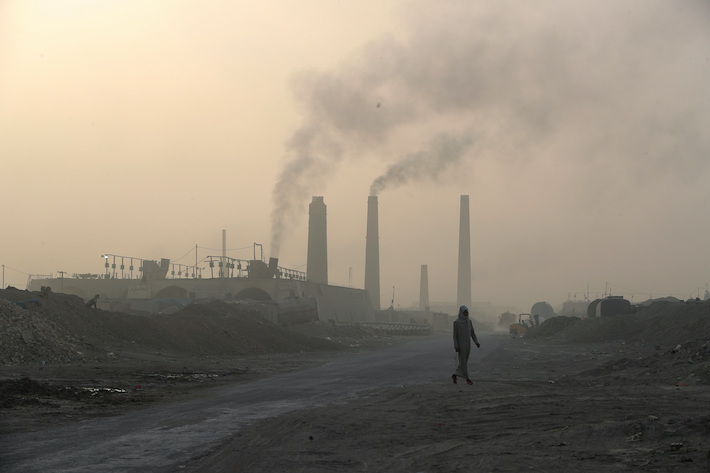Researchers from Tokyo Metropolitan University (TMU) say they have converted a bicarbonate solution made from captured carbon into a ‘green fuel’.
A peer-reviewed news release from the university on September 14 explains how TMU researchers developed electrochemical cells to convert carbon dioxide to a formate compound – an “environmentally friendly fuel” that can be used to generate power.
It said carbon capture technology is a big part of the global strategy to reduce emissions and fight climate change.
ALSO SEE: US Researchers Make Cement With 98% Less CO2 – New Atlas
“But the important question of what we do with the captured carbon dioxide remains an open challenge. Do we simply push it underground, or is there more to it? Scientists certainly think so.
“Using start-of-the-art catalysts and chemical processes, work is underway to try and convert the captured product into something more useful for society.”
A “particularly enticing” application is the conversion of CO2 to an environmentally friendly fuel, it said.
Technology had been developed for using electrochemical cells to reduce the CO2 for a formate compound, which can be used in formate fuel cells to generate power.
But, a “significant roadblock is the need for pure carbon dioxide,” it said, as pressurizing CO2 can be highly energy intensive.
“The gas is not converted very efficiently, and the cells do not last very long. Enter reactive carbon capture, where CO2 is dissolved in alkaline solutions, like bicarbonate solutions, can be directly used to create formate ions without the losses associated with providing pure gas,” it said.
The key challenge was designing “a better electrochemical cell” that can selectively produce formate ions from bicarbonate iOS without losing out to side reactions such as the production of hydrogen.
Bicarbonate electrolyzer
A team of researchers led by TMU’s Professor Fumiaki Amano had resolved this problem, it said, by “creating a new cell with excellent selectivity for the conversion of bicarbonate ions into formate ions.”
The researchers developed a new electrochemical cell, with a porous membrane layer in between the electrodes, that “overcomes major issues suffered in reactive carbon capture and achieves performances rivaling energy-hungry gas-fed methods,” it said.
“Processes like theirs directly add value to waste streams and are key to realizing net zero emissions.
“Given the demands on climate change technology, improvements like this to the efficient running of electrochemical cells promises to have a big impact.
“The team hopes their new bicarbonate electrolyzer can be a viable option for society as it strives towards a green transformation.”
CO2 removal won’t stop sea, ocean impacts
It is too early to say what impact the Japanese discovery will have. Indeed, scientists warned last week that even greater efforts to strip carbon dioxide from the atmosphere will fail to avert climate change catastrophe, as rising global temperatures threaten to cross the key 1.5-degrees-Celsius threshold.
The Intergovernmental Panel on Climate Change has said carbon dioxide removal (CDR) could help slow warming by reducing greenhouse gas already accumulated in the atmosphere, and even temperatures, especially if 1.5C is exceeded.
But, even if removing CO2 works, it can do nothing to mitigate other aspects of climate change, from sea level rises to changes in ocean circulation, scientists said in research report published in the journal Nature on October 9, Reuters reported.
“Even if you’ve brought temperatures back down again, the world we will be looking at will not be the same,” said Carl-Friedrich Schleussner of Austria’s International Institute of Applied Systems Analysis, one of the paper’s authors.
Threat from melting permafrost, peatlands
The research showed cutting temperatures from their peak could also prove harder than anticipated even if CDR is scaled up, particularly as melting permafrost and shrinking peatlands release methane and drive further warming.
CDR refers to a range of techniques that extract and store away CO2 already in the atmosphere, including natural solutions such as forests and ocean algae, as well as new technologies that filter carbon dioxide from the air.
Existing CDR capacity takes about 2 billion metric tons of CO2 out of the atmosphere every year, but that figure must rise to about 7 billion to 9 billion tons to meet the world’s climate goals, a separate research report said in June.
Yet there are limits to how much new forest can be planted and how much CO2 can be permanently sequestered, while current technologies are expensive, said Joeri Rogelj of Imperial College London, another co-author of the paper in Nature.
“If we are starting to use land exclusively for carbon management, this can strongly conflict with the other important roles of land, be it biodiversity (or) food production,” he told a briefing.
Even the most optimistic emissions reduction scenario in the IPCC’s latest assessment report, published last year, factored in the possibility of a small overshoot of 0.1C.
Reversing that would require the removal of about 220 billion tons of CO2, while an overshoot of 0.5C – also consistent with the IPCC’s best-case scenario ¨ would need more than a trillion tons removed, Rogelj said.
“The risks the world exposes itself to (from) an overshoot are much larger than acknowledged,” he said.
“Only through ambitious emissions reductions in the near-term can we effectively reduce the risks from climate change.”
- Jim Pollard with Reuters
ALSO SEE:
Scientists Fear Nature’s Carbon Sinks Are Failing – Guardian
Energy Emissions Set to Peak But ‘Not in Time’ For Climate Goals
BP Dumps Oil Pledge While Chasing Billions in Climate Subsidies
Floods or Drought: Climate Change Worsens Global Water Woes
Booming Solar Puts 2030 Renewable Energy Goals ‘Within Reach’
China Carbon Market Set to Include Steel, Cement, Aluminium
Extreme Weather Cost China More Than $10 Billion In July Alone
China Turns to Carbon Capture, Biomass For Coal Power Emissions






















